As the world becomes increasingly conscious of environmental sustainability and energy consumption, the kitchen appliance industry is witnessing a transformative shift. The integration of Energy Rating Programs (ERPs) and energy labels in ovens has become a cornerstone in this evolution, not only influencing consumer choices but also shaping market dynamics. This article delves into the intricate details of the ERP energy label oven market, exploring its growth trends, consumer benefits, innovative solutions, regulatory impacts, and the promising future ahead.
Introduction to European and American Kitchen Appliance Markets
In the ever-evolving landscape of home appliances, the European and American kitchen appliance markets stand out as leaders in innovation, design, and technological advancements. These regions have not only set the stage for global trends but have also been at the forefront of adopting new standards that shape the industry. Let’s delve into the unique characteristics of these markets.
The European market is renowned for its emphasis on sustainability and energy efficiency. With stringent environmental regulations, manufacturers are under constant pressure to develop products that not only meet but exceed these standards. This has led to a robust market for energy-efficient appliances, with consumers increasingly seeking out options that align with their eco-conscious values.
In contrast, the American market, while sharing a focus on sustainability, also places a significant emphasis on convenience and technology. American consumers are often early adopters of new technologies, leading to a market that is both diverse and dynamic. From high-end, smart kitchen appliances to more affordable, energy-efficient models, the U.S. market caters to a wide range of consumer needs and preferences.
In Europe, the kitchen appliance market is segmented into various categories, including refrigerators, dishwashers, washing machines, and of course, ovens. Ovens, in particular, have seen a surge in demand for advanced features like convection cooking, self-cleaning capabilities, and precise temperature control. This shift is a direct response to consumers’ desire for both convenience and quality cooking experiences.
Similarly, in the U.S., the oven market is experiencing a transformation, with a growing number of consumers investing in premium appliances. Smart ovens, equipped with features like Wi-Fi connectivity, voice control, and integrated recipe apps, are becoming increasingly popular. These advancements not only enhance the cooking experience but also provide valuable insights into energy usage and maintenance.
One cannot overlook the role of energy labels in these markets. In Europe, the Energy Labeling Directive has been a cornerstone in promoting energy-efficient appliances. These labels provide clear and standardized information about the energy consumption of appliances, helping consumers make informed decisions. The U.S., while having its own Energy Star program, also benefits from the transparency that energy labels offer.
When it comes to oven solutions, manufacturers in both Europe and the U.S. are pushing the boundaries of what’s possible. Advanced oven technologies, such as those that optimize heat distribution and minimize energy waste, are becoming more prevalent. For instance, convection ovens are not only faster and more efficient but also more consistent in cooking results.
In Europe, the demand for multifunctional ovens, such as those capable of slow cooking, roasting, and even baking at various temperatures simultaneously, is on the rise. These versatile appliances cater to consumers who seek to minimize the number of devices in their kitchen without compromising on functionality.
In the U.S., there’s a trend towards healthier cooking options, which has spurred the development of ovens that can achieve precise temperatures and cooking times. This focus on health and wellness aligns with the broader consumer shift towards more sustainable and eco-friendly lifestyles.
The integration of ERP (Enterprise Resource Planning) systems within the kitchen appliance industry is another significant development. ERP solutions help manufacturers streamline their operations, from design and production to supply chain management and sales. By optimizing these processes, companies can reduce costs and improve efficiency, ultimately leading to better products for consumers.
In the European market, for example, ERP systems are used to manage the complex regulatory requirements and ensure compliance with energy standards. In the U.S., ERP systems are employed to enhance the customer experience by providing real-time data and insights into product performance and consumer behavior.
The American market, with its diverse consumer base and strong emphasis on technology, offers a fertile ground for innovation in ERP energy label ovens. The integration of smart technology with energy-efficient design is creating a new wave of products that are both practical and appealing to the modern consumer.
In conclusion, the European and American kitchen appliance markets are distinct yet interconnected, each contributing to the global trend of energy efficiency and technological advancement. As consumers continue to seek out appliances that are both sustainable and high-performing, the demand for ERP energy label oven solutions is expected to grow. The future of these markets lies in the ability of manufacturers to balance innovation with sustainability, offering consumers choices that are both eco-friendly and convenient.
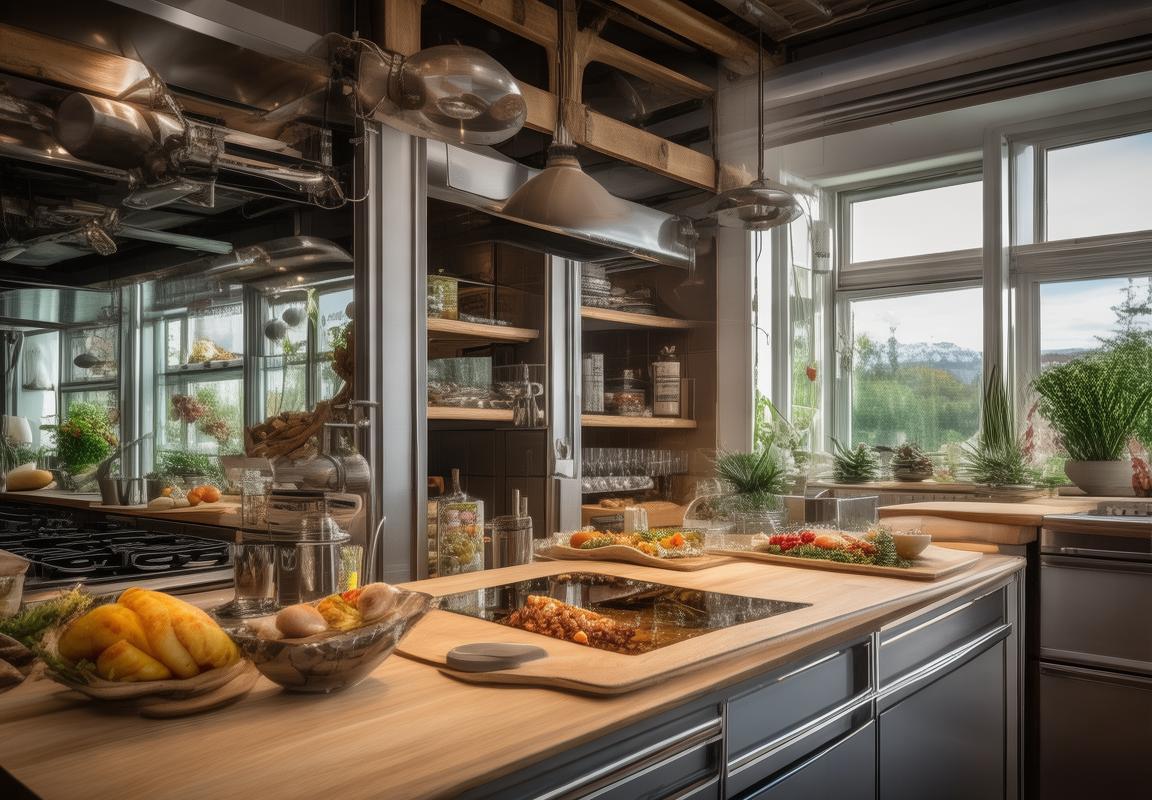
The Rise of Energy Efficiency: The Role of ERP
In recent years, the emphasis on energy efficiency has surged across various industries, and the kitchen appliance sector is no exception. Energy efficiency is no longer just a buzzword; it’s a fundamental shift in how consumers and manufacturers approach the design and operation of kitchen appliances. At the heart of this transformation lies Enterprise Resource Planning (ERP) systems, which are becoming increasingly integral to optimizing energy consumption and enhancing product performance.
The integration of ERP into kitchen appliance manufacturing processes has opened up new avenues for sustainability. These systems enable companies to streamline operations, reduce waste, and implement energy-saving measures that were once unattainable. By consolidating data across the supply chain, ERP systems provide a comprehensive view of energy usage, allowing manufacturers to pinpoint inefficiencies and develop strategies to mitigate them.
As awareness of climate change grows, consumers are more conscious of the environmental impact of their purchases. ERP systems play a pivotal role in meeting this demand by facilitating the creation of energy-efficient appliances that not only save on utility bills but also contribute to a greener planet. By analyzing energy consumption patterns and setting performance benchmarks, ERP systems help appliances achieve higher efficiency ratings, which are now a significant selling point for consumers.
One of the key functionalities of ERP in the kitchen appliance market is the management of energy labels. These labels, which provide information on the energy efficiency of appliances, are crucial for consumers in making informed decisions. ERP systems can automatically update these labels, ensuring that they reflect the latest efficiency data. This real-time information is essential for maintaining transparency and trust in the marketplace.
Another significant role of ERP in promoting energy efficiency is through the optimization of production processes. By integrating manufacturing data with energy management systems, ERP can identify opportunities for energy savings during the assembly line. This can include adjusting heating, ventilation, and air conditioning (HVAC) systems to reduce energy consumption or optimizing production schedules to align with peak energy demand times.
Moreover, ERP systems enable predictive maintenance, which is instrumental in preventing energy losses due to equipment failure. By analyzing machine data, manufacturers can predict when maintenance is required, thereby reducing downtime and ensuring that appliances operate at peak efficiency. This proactive approach not only saves energy but also extends the lifespan of the appliances, reducing the environmental impact associated with their disposal.
In the realm of product design, ERP systems contribute to energy efficiency by facilitating the integration of new technologies. For instance, the development of smart appliances that can learn from user habits and adjust settings accordingly is made possible through the sophisticated analytics and data processing capabilities of ERP. This not only enhances the user experience but also optimizes energy use.
Additionally, ERP systems facilitate the implementation of lean manufacturing principles, which are inherently energy-efficient. By eliminating waste and improving resource allocation, these systems help reduce the overall energy footprint of kitchen appliance production. This includes everything from the sourcing of raw materials to the packaging and distribution of finished products.
On the regulatory front, ERP systems are also instrumental in ensuring compliance with energy efficiency standards. Governments around the world are implementing strict regulations on the energy consumption of appliances, and ERP can help manufacturers stay ahead of these requirements. By tracking energy performance throughout the lifecycle of a product, ERP systems can ensure that appliances meet or exceed the necessary standards without compromising on functionality.
The rise of energy efficiency in the kitchen appliance market is not just about reducing costs; it’s about fostering a culture of sustainability. ERP systems are at the forefront of this movement, empowering manufacturers to produce appliances that are not only efficient but also environmentally responsible. As the demand for energy-efficient products continues to grow, ERP will remain a cornerstone of the industry, driving innovation and setting new benchmarks for the future.

Understanding Energy Labels: A Key to Consumer Choice
Energy labels have become an integral part of the consumer appliance landscape, offering a clear and concise way for buyers to make informed decisions about the energy efficiency of kitchen appliances. These labels serve as a guidepost, illuminating the energy consumption and environmental impact of various products. Here’s a closer look at what energy labels are, how they work, and why they are a key factor in consumer choice.
Energy labels provide a standardized format that displays key information about a product’s energy performance. They often include details such as the appliance’s energy consumption, estimated running costs, and a rating system that compares the product’s efficiency to similar models. This information is crucial for consumers who are looking to reduce their carbon footprint and save on energy bills.
The label’s star rating system is a particularly impactful feature. It assigns a number of stars to the appliance, with more stars indicating higher energy efficiency. For instance, a five-star rating signifies that the appliance is among the most energy-efficient in its category. This visual representation makes it easy for consumers to compare different models at a glance.
Understanding the label’s energy consumption figures is equally important. The annual energy consumption is typically listed, which gives consumers an estimate of how much energy the appliance will use over a year. This figure is calculated based on the manufacturer’s specifications and can vary depending on how the appliance is used.
Energy labels also often include a section on the appliance’s environmental impact. This might include information about the appliance’s recyclability, the materials used in its construction, and any certifications it holds that attest to its eco-friendliness. For environmentally conscious consumers, this information can be a deciding factor in their purchase.
Beyond the immediate environmental benefits, energy labels also play a role in financial savings. By choosing appliances with higher energy efficiency ratings, consumers can significantly reduce their energy bills over time. The label’s estimated running costs provide a snapshot of these savings, allowing consumers to weigh the initial cost of a more efficient appliance against the long-term savings it will bring.
Moreover, energy labels can help consumers make more sustainable choices. By providing transparent information, they encourage manufacturers to improve the energy efficiency of their products, which in turn drives innovation and technological advancements in the industry. This competition for higher ratings can lead to better-performing appliances that consume less energy and have a lower environmental impact.
It’s important to note that energy labels are not without their limitations. While they provide a wealth of information, they may not always reflect the real-world energy usage of an appliance. Factors such as usage patterns, environmental conditions, and maintenance can all influence actual energy consumption. Consumers should therefore use the label as a starting point for their research but also consider other factors before making a purchase.
Additionally, energy labels can vary from one country to another, reflecting different regulations and standards. In the European Union, for example, the Energy Labeling Directive governs the format and content of energy labels for a wide range of appliances. Similarly, the United States has its own EnergyGuide labels for major household appliances. This variation means that consumers must be aware of the specific label standards in their region when comparing products.
Despite these variations and limitations, energy labels remain a vital tool for consumers seeking to make environmentally and financially responsible decisions. They provide a clear, standardized way to evaluate the energy efficiency of kitchen appliances, and as such, they are a key to consumer choice in an increasingly eco-conscious world.
In recent years, there has been a growing trend towards more detailed and transparent energy labels. This includes the inclusion of additional metrics such as water consumption for dishwashers and refrigerant type for refrigerators. As awareness of climate change and sustainability grows, consumers are demanding more information to make well-informed choices. Energy labels are evolving to meet this demand, offering a more comprehensive picture of a product’s environmental impact and energy efficiency.
The role of energy labels in consumer choice is further reinforced by the fact that they often serve as a point of differentiation for retailers and manufacturers. Products with higher energy efficiency ratings can be showcased more prominently, and retailers may offer incentives for purchasing these eco-friendly models. This marketing strategy is a testament to the influence that energy labels have on consumer purchasing decisions.
In conclusion, energy labels are an essential tool for consumers looking to navigate the complex landscape of kitchen appliances. They provide a straightforward way to compare products based on their energy efficiency, environmental impact, and potential for cost savings. As awareness of sustainability continues to rise, the importance of these labels in guiding consumer choice is only likely to grow.
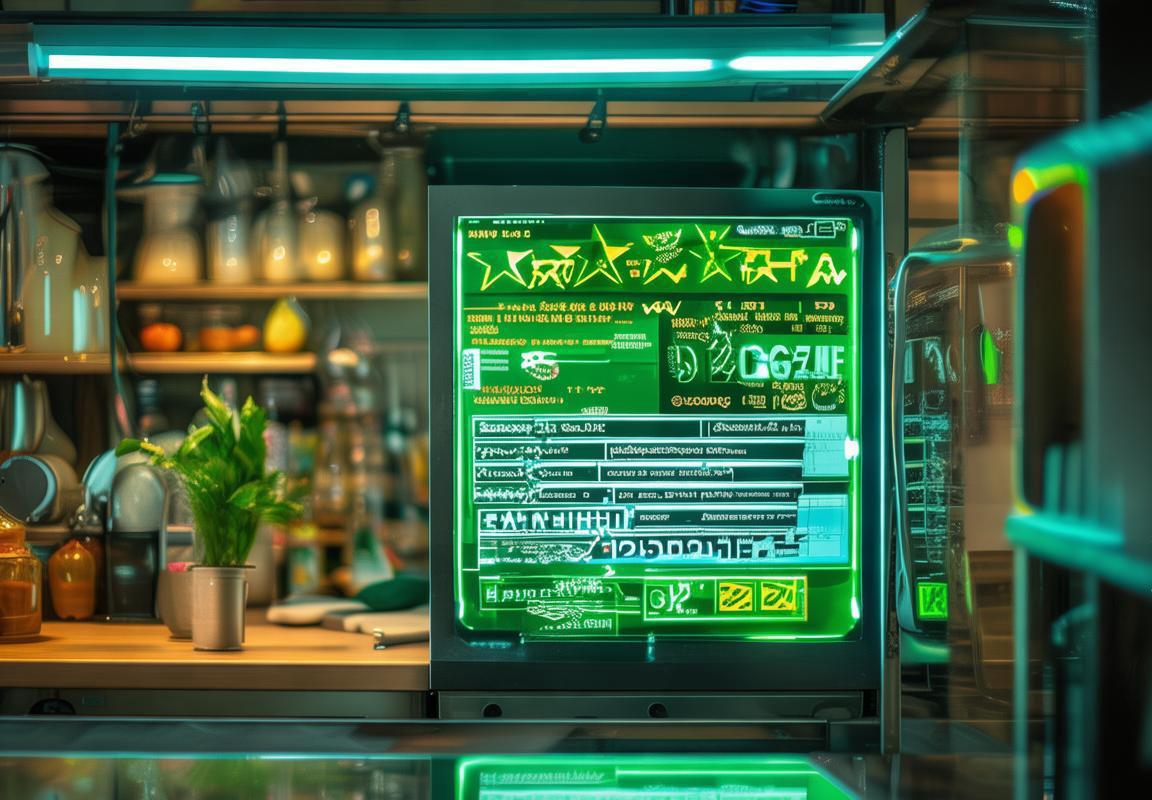
Oven Solutions: Innovations in Energy-Efficient Cooking
In recent years, the demand for energy-efficient cooking solutions has surged, with consumers and businesses alike seeking to reduce their carbon footprint and lower utility bills. The oven, a staple in kitchen appliances, has seen a wave of innovations aimed at maximizing energy savings without compromising on performance or convenience. Let’s delve into some of the cutting-edge oven solutions that are leading the charge in energy-efficient cooking.
The first innovation to note is the shift towards induction cooking technology. Induction ovens use electromagnetic fields to generate heat directly in the cookware, which means that the energy is used more efficiently compared to traditional electric or gas ovens. This not only reduces energy consumption but also provides faster and more precise temperature control, leading to shorter cooking times and, ultimately, lower energy bills.
Another significant advancement is the integration of smart technology into ovens. Smart ovens can connect to your home network and offer a range of features that enhance energy efficiency. For example, some models come with pre-programmed settings that optimize cooking times and temperatures, ensuring that food is cooked to perfection while using less energy. Additionally, these smart ovens can be controlled remotely through an app, allowing users to monitor and adjust cooking processes from anywhere, further reducing energy waste.
Insulation has also played a crucial role in the development of energy-efficient ovens. Modern ovens are designed with advanced insulation materials that help maintain the desired cooking temperature, reducing the need for excessive heat generation. This insulation not only saves energy but also helps to preserve the flavor and texture of the food, as the oven retains heat more effectively.
The use of convection fans within ovens is another innovation that contributes to energy efficiency. Convection ovens circulate hot air around the food, which speeds up cooking times and distributes heat more evenly. This means that less energy is required to achieve the same cooking results, and the food is more likely to be cooked uniformly without the need for frequent stirring or flipping.
Some oven solutions incorporate variable fan speeds, allowing users to control the flow of air within the oven. This feature is particularly beneficial for delicate dishes that require a gentle, even heat, as well as for dishes that need to be seared quickly. By adjusting the fan speed, users can save energy while achieving the desired cooking outcome.
Energy-saving features such as programmable timers and delayed start functions have become standard in many modern ovens. These features allow users to start cooking at a specific time, ensuring that the oven is not consuming energy when it’s not needed. This is especially useful for those who want to cook dinner while still at work, or for anyone looking to save on energy costs by avoiding unnecessary preheating.
In addition to these technological advancements, manufacturers are also focusing on the materials used in oven construction. Lightweight materials, such as aluminum and steel, not only contribute to the overall efficiency of the oven but also help to reduce the overall weight, which can lead to energy savings in the long run.
The trend towards multi-functional ovens is also a testament to the industry’s commitment to energy efficiency. Ovens that can perform a variety of tasks, such as roasting, baking, broiling, and even air frying, often do so with a focus on minimizing energy use. These multifaceted appliances can replace multiple single-function appliances, further reducing the overall energy consumption of a kitchen.
Finally, it’s worth mentioning the importance of energy labels. These labels provide consumers with information about the energy efficiency of an oven, allowing them to make informed decisions when purchasing new appliances. As the market becomes more aware of energy-saving benefits, we can expect to see even more innovative oven solutions that cater to both environmental concerns and cost savings.
In summary, the oven industry has made significant strides in developing energy-efficient cooking solutions. From induction technology to smart features and advanced insulation, these innovations are changing the way we cook, saving energy, and helping to create a more sustainable future. As technology continues to evolve, we can look forward to even more efficient and versatile oven solutions that will enhance our culinary experiences without compromising on sustainability.
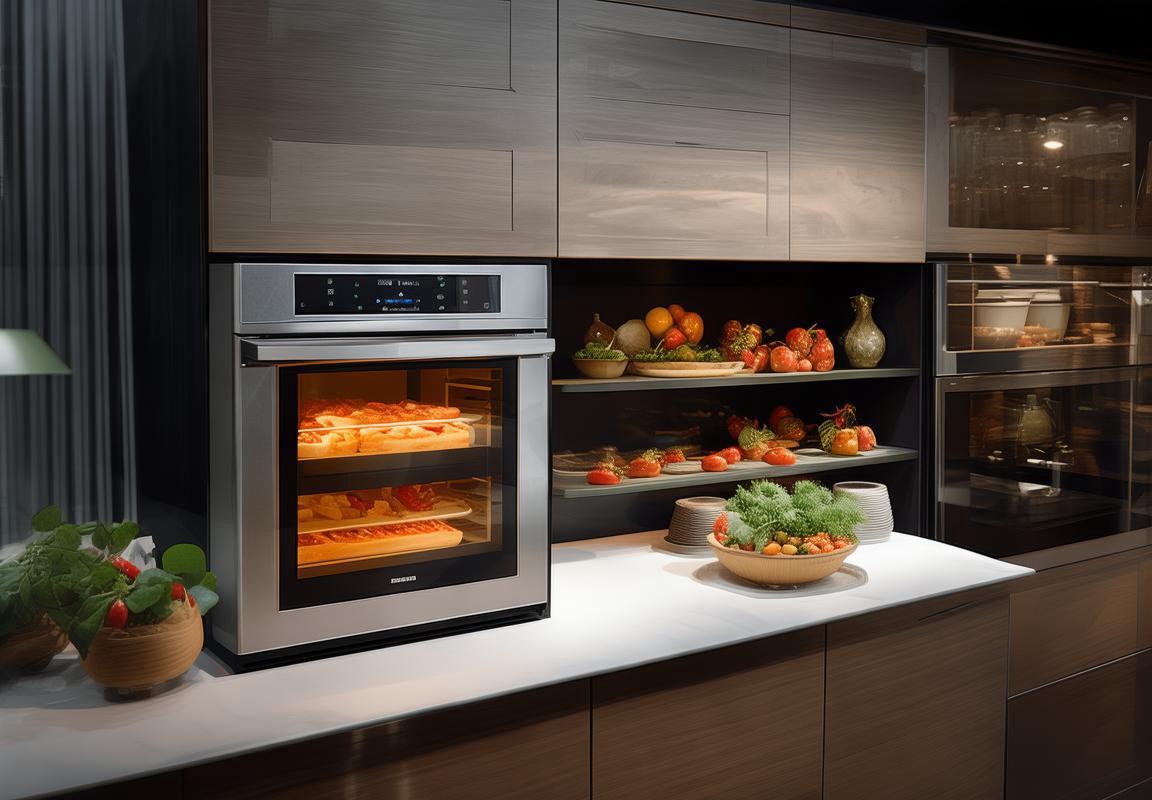
Market Analysis: Trends in ERP Energy Label Adoption
In the ever-evolving landscape of kitchen appliance markets, the adoption of Energy Rating Labels (ERPs) has become a pivotal factor. These labels provide a clear, standardized way for consumers to gauge the energy efficiency of their appliances. Let’s delve into the current trends in ERP energy label adoption across various markets.
The shift towards sustainability has been a driving force behind the increased use of ERP labels. As environmental concerns grow, consumers are becoming more conscious of the energy consumption of their appliances. This awareness has led to a surge in the demand for products that are not only functional but also eco-friendly.
In Europe, the European Union’s Energy Label Directive has been a cornerstone in promoting energy-efficient appliances. The label grades appliances from A to G, with A being the most energy-efficient and G the least. This grading system has become a key tool for manufacturers to differentiate their products and for consumers to make informed decisions.
North America, particularly the United States and Canada, has seen a similar trend with the EnergyGuide label for appliances. The EnergyGuide provides an estimate of the annual energy consumption of a typical model, allowing consumers to compare different models based on their energy efficiency. This transparency has spurred a competitive environment among manufacturers to develop and offer more energy-efficient appliances.
The digital age has also played a significant role in ERP energy label adoption. Smart appliances equipped with IoT (Internet of Things) technology are becoming increasingly common. These devices can be monitored and controlled remotely, offering users real-time energy consumption data. The integration of ERP labels with smart technology provides consumers with a more comprehensive understanding of their appliance’s energy efficiency and usage patterns.
Another trend is the rise of green certifications alongside ERP labels. Organizations like Energy Star in the U.S. and the Energy Saving Trust in the UK offer certifications that go beyond the basic ERP labels. These certifications often include additional criteria, such as durability, water efficiency, and the use of sustainable materials. Consumers who prioritize these aspects are more likely to seek out appliances with these certifications.
In emerging markets, the adoption of ERP labels is still gaining traction. However, there is a growing recognition of the importance of energy efficiency. Governments in these regions are implementing policies and incentives to promote the use of energy-efficient appliances. For instance, subsidies and tax breaks for purchasing energy-efficient models are becoming more common.
The influence of retail channels is also a key factor in ERP energy label adoption. Large retailers are increasingly emphasizing the importance of energy efficiency in their marketing strategies. They are using ERP labels to highlight the benefits of energy-efficient appliances to their customers, thus driving demand.
Consumer behavior is another aspect that is shaping the adoption of ERP labels. There is a noticeable trend towards making sustainable choices, not just in appliances but across all consumer goods. This shift is being driven by younger generations who are more environmentally conscious. As these consumers enter the market, their preference for energy-efficient appliances is likely to influence the broader market.
The role of education cannot be overstated. As consumers become more informed about the environmental impact of their choices, they are more likely to seek out appliances with ERP labels. Manufacturers and retailers are responding by providing more information and resources to help consumers understand the value of energy-efficient appliances.
The trend towards modular and customizable kitchen appliances is also influencing ERP energy label adoption. Consumers are looking for appliances that can be tailored to their specific needs, while still maintaining high levels of energy efficiency. This demand is pushing manufacturers to innovate and offer a wider range of energy-efficient models.
In conclusion, the adoption of ERP energy labels is on the rise, driven by environmental concerns, technological advancements, consumer preferences, and regulatory requirements. As the market continues to evolve, we can expect to see even more innovative solutions that cater to these factors, further promoting the use of energy-efficient appliances worldwide.
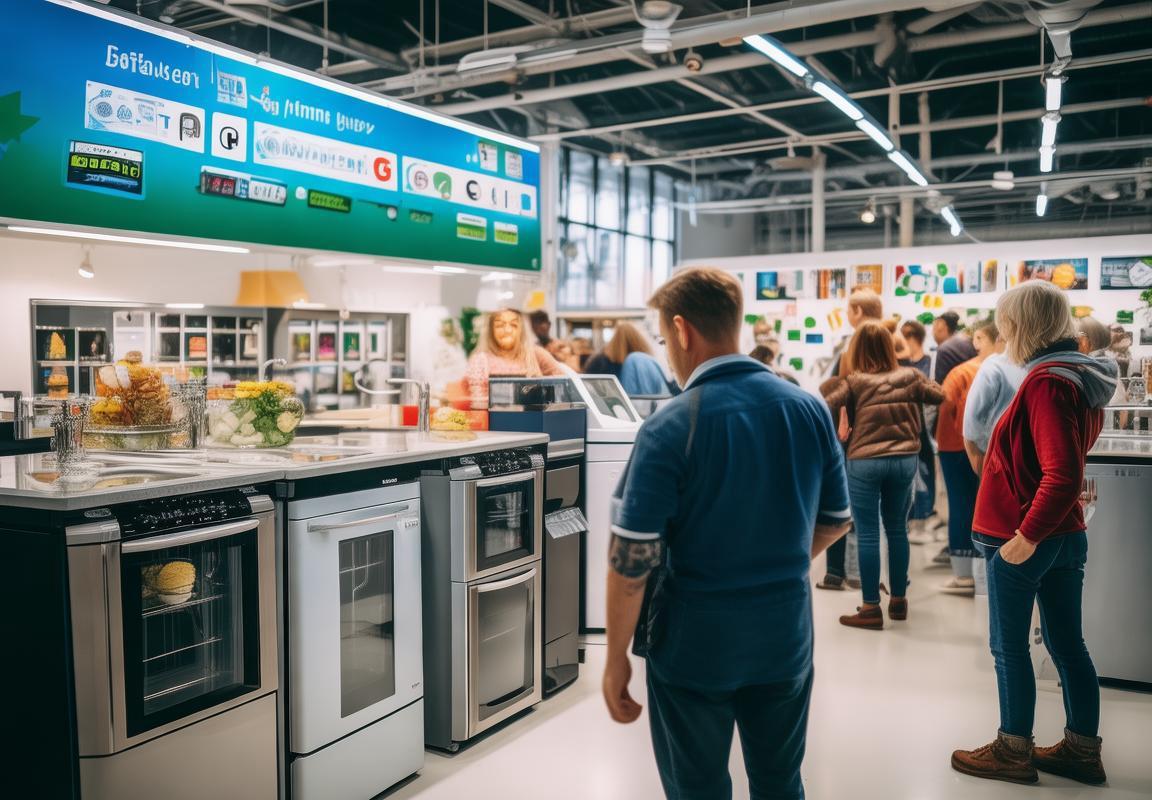
Consumer Benefits and Market Potential
The adoption of ERP energy labels in the kitchen appliance market has opened up a world of benefits for consumers. These labels provide a clear, standardized way to understand the energy efficiency of various appliances, from refrigerators to ovens. Let’s delve into the tangible advantages these labels offer and the untapped market potential they represent.
Energy savings are a cornerstone of ERP energy labels. By showcasing the energy consumption of an oven, these labels empower consumers to make informed decisions that can lead to significant reductions in their monthly utility bills. For instance, an oven with a high energy efficiency rating can lead to savings of up to 30% compared to a model with a lower rating. This not only benefits the consumer’s wallet but also contributes to a greener, more sustainable lifestyle.
Moreover, energy-efficient ovens often have a longer lifespan. The lower energy demand means that the components are under less stress, resulting in fewer repairs and replacements over time. This longevity aspect of energy-efficient appliances can be a substantial draw for consumers looking to invest in a reliable and durable kitchen appliance.
Environmental consciousness is on the rise, and ERP energy labels play a pivotal role in catering to this growing trend. Consumers are increasingly seeking out products that are eco-friendly and have a lower carbon footprint. By choosing an oven with a high energy efficiency rating, consumers are not only reducing their energy bills but also contributing to the reduction of greenhouse gas emissions. This alignment with environmental values can be a significant factor in the consumer’s purchasing decision.
The market potential for ERP energy labels is substantial. As awareness of these labels grows, so does the demand for energy-efficient appliances. This shift is being driven by a variety of factors. For one, governments around the world are implementing stricter energy efficiency standards, which in turn push manufacturers to produce more efficient models. Additionally, the younger demographic, often referred to as the “millennials,” places a high value on sustainability and is more likely to seek out energy-efficient products.
The integration of smart technology into kitchen appliances has also fueled the market potential. Smart ovens, for example, can be controlled remotely and offer a range of features that optimize energy use. These smart features, combined with ERP energy labels, provide consumers with a comprehensive view of the appliance’s energy efficiency and functionality. This dual appeal of advanced technology and energy conservation is poised to drive market growth in the coming years.
The demographic shift is another driver of market potential. As populations age, there is a growing preference for appliances that are easier to use and maintain. Energy-efficient ovens with intuitive interfaces and user-friendly controls cater to this demographic, offering a seamless and efficient cooking experience. This trend is likely to persist, further bolstering the market potential for ERP-labeled appliances.
In terms of regional markets, Europe and North America are currently leading the charge in ERP energy label adoption. These regions have a strong focus on sustainability and energy conservation, which aligns perfectly with the principles of ERP labeling. However, emerging markets such as Asia and South America are also showing significant interest in energy-efficient appliances, driven by increasing urbanization and rising environmental concerns.
The economic benefits of energy-efficient appliances are hard to overlook. As energy prices continue to fluctuate, the long-term savings from using energy-efficient appliances can be substantial. This economic incentive is a powerful motivator for consumers, particularly in regions where energy costs are a significant portion of the household budget.
The rise of eco-conscious brands is also shaping the market potential. Consumers are gravitating towards brands that have a reputation for sustainability and ethical practices. ERP energy labels can serve as a mark of quality and reliability, helping these brands to differentiate themselves in a crowded market.
In conclusion, the benefits of ERP energy labels for consumers are multifaceted, from direct financial savings to the satisfaction of contributing to a greener planet. The market potential for these labels is vast, driven by a combination of environmental concerns, technological advancements, demographic shifts, and economic incentives. As awareness and adoption continue to grow, the future looks bright for the ERP energy label oven market.
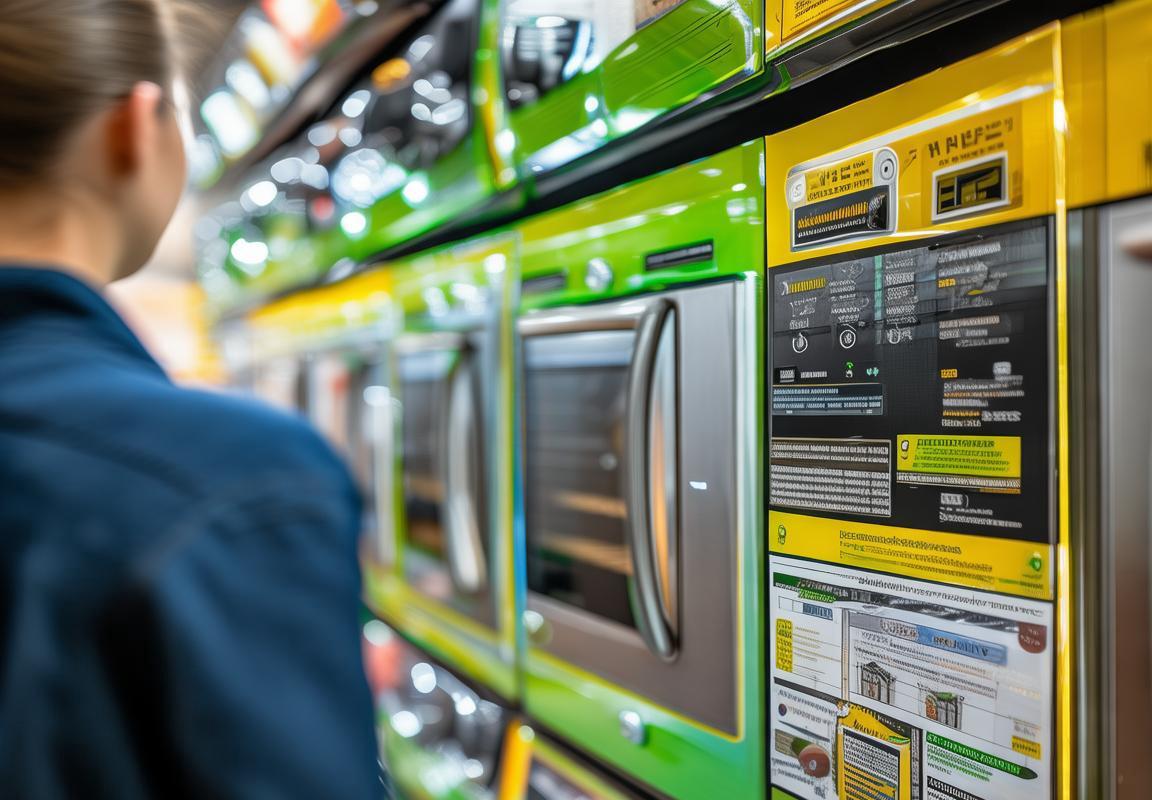
Innovative Solutions: Smart Ovens and ERP Integration
In the realm of kitchen appliances, the integration of smart technology has revolutionized the way we cook. Smart ovens, in particular, have emerged as a beacon of innovation, offering users a blend of convenience, efficiency, and advanced features. Here’s a closer look at how these smart appliances are reshaping the cooking landscape and integrating with Energy Rating Programs (ERP) to enhance user experience.
The advent of smart ovens has brought about a new era of cooking that is not only precise but also sustainable. These ovens are equipped with sensors that adjust cooking temperatures and times, ensuring that food is cooked to perfection with minimal energy waste. By integrating ERP systems, these smart ovens provide real-time energy consumption data, allowing consumers to make informed decisions about their energy usage.
Smart ovens often come with a suite of features that go beyond traditional cooking capabilities. From convection cooking to dehydrating and even sous-vide, these appliances offer a variety of methods to prepare meals that were once only achievable in specialized kitchen equipment. The integration with ERP systems allows these features to be optimized for energy efficiency, ensuring that the advanced cooking techniques do not come at the expense of energy consumption.
One of the standout features of smart ovens is their ability to connect to the internet and interact with other smart home devices. This connectivity enables users to control their ovens remotely, adjust settings, and even start cooking before they arrive home. ERP integration means that these smart ovens can also communicate with the home’s energy management system, further reducing energy waste by scheduling cooking times during off-peak hours.
User interfaces have also seen significant advancements with smart ovens. Modern ovens now feature sleek, touch-screen interfaces that are intuitive and easy to navigate. This user-friendly design is complemented by voice control, allowing hands-free operation. ERP integration allows these interfaces to display detailed energy consumption information, empowering consumers to track their energy usage and make adjustments accordingly.
Energy efficiency is at the heart of ERP integration with smart ovens. By providing detailed energy ratings and usage data, ERP systems help consumers understand the environmental impact of their cooking habits. This transparency is crucial in encouraging more sustainable practices. Smart ovens with ERP integration can even provide tips on how to reduce energy consumption, such as using the right pan size for the oven or preheating only when necessary.
The market for smart ovens is growing rapidly, driven by consumer demand for convenience and sustainability. As more people become environmentally conscious, the appeal of energy-efficient appliances like smart ovens is undeniable. ERP integration not only enhances the functionality of these ovens but also positions them as a smart investment for both the consumer and the planet.
Manufacturers are responding to this demand by offering a wide range of smart oven models, each with unique features and ERP capabilities. From compact countertop models to full-sized ranges, there’s a smart oven to fit every kitchen and budget. The variety in the market ensures that consumers can find an oven that meets their specific needs and preferences.
In the realm of smart oven innovation, some brands are leading the way with cutting-edge features. For instance, some models now come with AI-driven cooking programs that learn from user preferences and cooking habits, offering personalized recipes and settings. This level of customization, combined with ERP integration, ensures that each meal is cooked with maximum efficiency and minimum energy use.
The integration of ERP systems with smart ovens also opens up new possibilities for data analytics. Manufacturers can use this data to improve their products, predict maintenance needs, and even offer predictive maintenance services. Consumers, on the other hand, can benefit from insights into their cooking habits, which can lead to more efficient and healthier meal preparation.
As the market for smart ovens continues to expand, we can expect to see further innovations that push the boundaries of what’s possible in kitchen appliances. The integration of ERP systems is just the beginning, with potential for advancements in AI, IoT (Internet of Things), and even blockchain technology to further enhance the energy efficiency and user experience of smart ovens.
In conclusion, smart ovens are not just a trend; they are a testament to the power of technology in making our lives more convenient and sustainable. With ERP integration, these ovens are not only cooking companions but also energy-conscious allies, helping us to reduce our carbon footprint and enjoy our culinary creations with peace of mind.
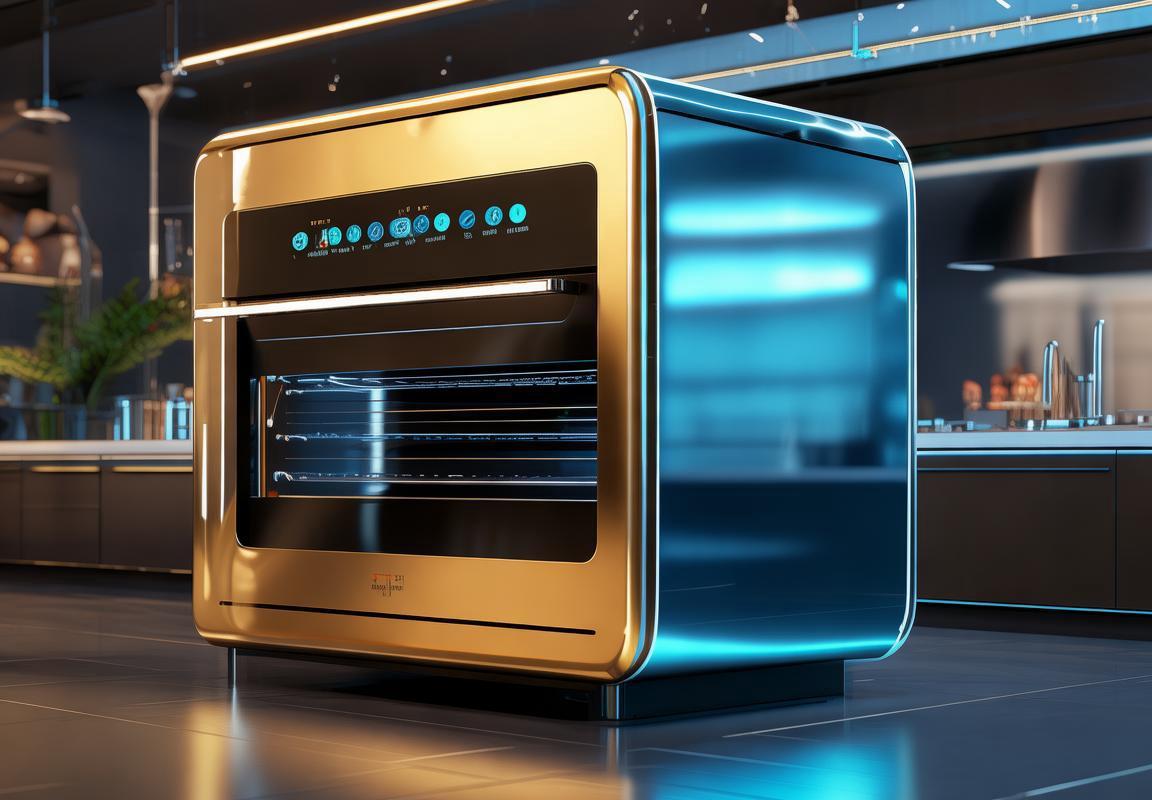
Regulatory Impact: Compliance and Market Growth
In the ever-evolving landscape of the kitchen appliance market, the impact of regulatory frameworks cannot be overstated. Compliance with these regulations is not just a legal obligation; it’s a catalyst for market growth and innovation. Let’s delve into how compliance shapes the market for energy-efficient appliances like ERP-equipped ovens.
The introduction of energy performance regulations has set a new standard for appliance manufacturers, pushing them to prioritize energy efficiency. This shift has led to a surge in demand for ERP (Energy Rating Program) labeled ovens, as consumers become increasingly aware of the long-term cost savings and environmental benefits.
As regulations tighten, we see a clear trend towards the adoption of more advanced and energy-efficient oven technologies. The integration of ERP labeling with these technologies ensures that consumers have access to reliable and accurate information about the energy consumption of their appliances. This transparency not only fosters trust but also drives market competition, with manufacturers striving to outdo each other in offering the most efficient and compliant products.
Compliance with ERP standards has also spurred innovation within the industry. Companies are investing in research and development to create oven solutions that not only meet but exceed the minimum energy efficiency requirements. The result is a marketplace filled with smart ovens that are not only energy-saving but also user-friendly and packed with features that enhance the cooking experience.
Government incentives play a significant role in the regulatory impact. Many countries offer tax breaks, rebates, or subsidies for purchasing energy-efficient appliances, which directly influences consumer behavior. As the cost of buying an ERP-labeled oven becomes more competitive, the market potential expands, leading to increased sales and a broader consumer base.
Moreover, compliance with energy-efficient standards often leads to cost savings for businesses and households alike. With lower energy bills, consumers can afford to invest in more sophisticated appliances without compromising on their budget. This economic viability further fuels market growth, as the financial benefits become more tangible and attractive.
Environmental concerns are also driving the regulatory impact. The growing awareness of climate change and its effects has led to stricter regulations aimed at reducing carbon emissions. Appliances that consume less energy are seen as a step towards a more sustainable future, and this perception is shaping the market dynamics.
The integration of smart technology with ERP-labeled ovens is another area where regulations have had a significant impact. Smart ovens not only adhere to energy efficiency standards but also offer consumers the ability to monitor and control their appliances remotely. This added functionality is not only convenient but also aligns with the broader trend of smart home technology, which is becoming increasingly popular.
However, the regulatory landscape is not without its challenges. Manufacturers must navigate complex certification processes and ensure that their products are consistently compliant with changing regulations. This can be a costly endeavor, but it is offset by the benefits of a growing market and consumer confidence in ERP-labeled appliances.
In conclusion, the impact of regulatory compliance on the market for ERP energy-labeled ovens is profound. It has spurred innovation, expanded market potential, and aligned the interests of manufacturers, consumers, and the environment. As regulations continue to evolve, so too will the oven solutions available to consumers, driving further market growth and a greener, more sustainable future.

Case Studies: Successful Implementations of ERP Energy Label Ovens
In the realm of kitchen appliances, the adoption of Energy Rating Programs (ERP) and energy labels has become a pivotal factor in shaping consumer preferences and market dynamics. This section delves into several case studies that showcase the successful integration of ERP energy label ovens, highlighting the impact they have on both businesses and consumers.
The story of “GreenGlow Appliances” began with a commitment to sustainability. The company decided to integrate ERP energy labels into their oven lineup, aiming to appeal to eco-conscious consumers. Their smart ovens, equipped with energy-efficient features, quickly gained traction in the market. Customers appreciated the detailed information provided by the ERP labels, which allowed them to make informed decisions about their energy consumption.
At “Modern Kitchen Solutions,” the introduction of ERP energy label ovens was met with a warm reception. The company’s marketing strategy focused on the long-term cost savings associated with energy-efficient appliances. By showcasing the ERP labels, they were able to demonstrate the potential for significant energy bill reductions over time. This approach resonated with cost-conscious consumers, leading to a surge in sales.
“Urban Eats” is a chain of upscale restaurants that decided to incorporate ERP energy label ovens into their kitchen equipment. The move was not only about sustainability but also about setting a premium dining experience standard. The ERP labels helped them communicate their commitment to quality and environmental responsibility to their patrons. The result was a positive brand image and increased customer loyalty.
In the small town of “Harvest Valley,” a local appliance store, “Appliance Haven,” embraced ERP energy label ovens as a way to differentiate itself from competitors. The store owner, recognizing the growing demand for energy-efficient products, showcased the ovens as a premium offering. The detailed ERP labels helped customers understand the energy-saving benefits, and the store experienced a boost in sales as a result.
The “EcoLiving” community in a large city took a collective approach to energy efficiency. They organized a group purchase of ERP energy label ovens, leveraging the community’s buying power to secure a discount. The initiative was a success, with many residents adopting the new appliances. The ERP labels played a crucial role in the decision-making process, as they provided a clear comparison between different models.
“Global Gourmet” is a well-known restaurant chain that has expanded its menu to include a variety of international dishes. To cater to the diverse needs of their customers, they introduced ERP energy label ovens that could handle a range of cooking styles. The inclusion of ERP labels was essential in this case, as it allowed the chefs to select the most energy-efficient appliances for each dish, optimizing both performance and sustainability.
In the coastal town of “Seaside Breeze,” a new hotel opened its doors and decided to outfit its kitchen with ERP energy label ovens. The hotel management saw the labels as a way to reduce their carbon footprint and appeal to eco-friendly guests. The ovens’ energy efficiency also helped lower operational costs, contributing to the hotel’s bottom line.
The “Sustainable City” project in a major metropolitan area required all new buildings to be equipped with energy-efficient appliances. This initiative led to a significant increase in the adoption of ERP energy label ovens across various commercial kitchens. The project’s success was a testament to the effectiveness of ERP labels in driving market transformation.
These case studies demonstrate the multifaceted benefits of ERP energy label ovens. From individual consumers to large-scale commercial operations, the integration of ERP labels has proven to be a successful strategy for businesses looking to capitalize on market trends and consumer values. The future of kitchen appliances seems to be increasingly intertwined with energy efficiency, and ERP labels are at the forefront of this shift.
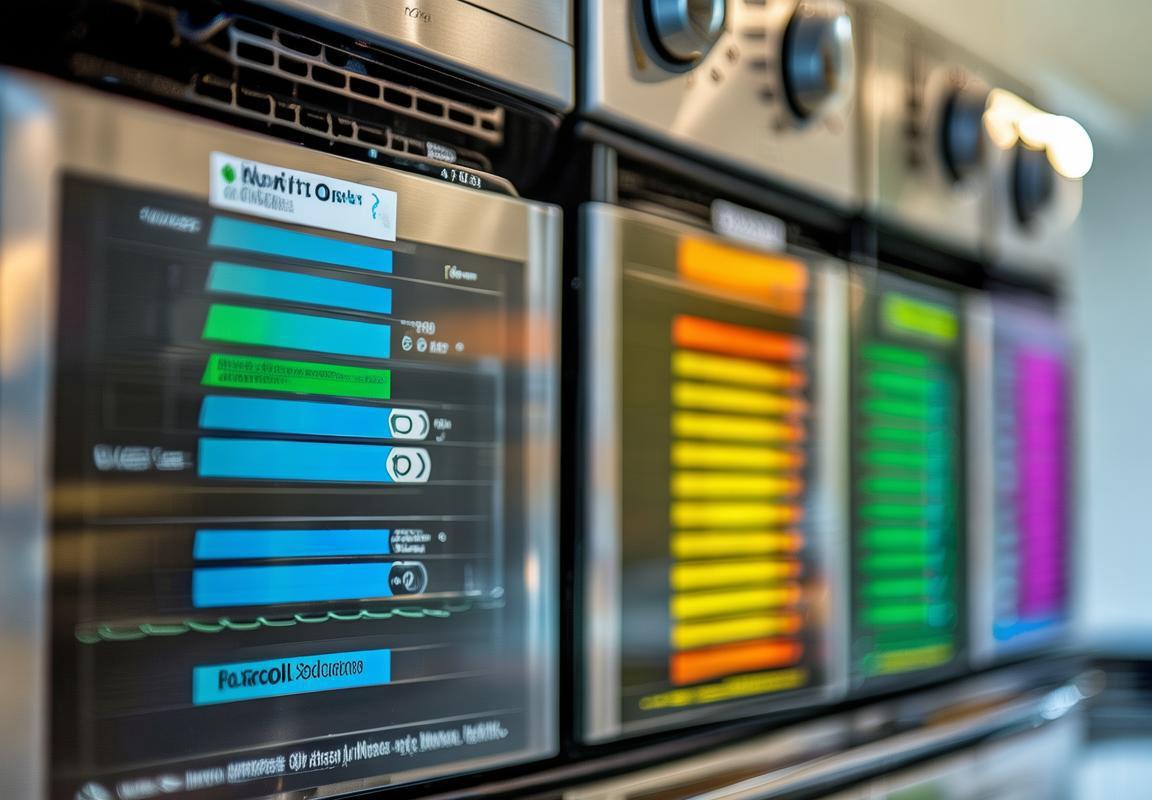
Future Outlook: Predictions for the ERP Energy Label Oven Market
The adoption of ERP (Energy Rating Program) energy labels in the oven market has been a transformative trend, reflecting a broader shift towards sustainability and energy-conscious consumerism. As the demand for eco-friendly appliances grows, understanding the impact of these labels on compliance and market growth is crucial.
In many countries, including the European Union and the United States, governments have implemented strict energy efficiency standards for kitchen appliances. These regulations not only aim to reduce carbon footprints but also encourage manufacturers to innovate and develop more energy-efficient products. Compliance with these standards is mandatory for oven manufacturers, and ERP energy labels are the visible outcome of this compliance.
These labels provide consumers with clear, standardized information about the energy consumption of ovens, making it easier to compare different models and make informed purchasing decisions. The integration of ERP energy labels has led to several significant outcomes:
-
Enhanced TransparencyConsumers are increasingly looking for transparency in product information. ERP energy labels offer a straightforward way to compare the energy efficiency of different oven models. This transparency is essential for consumers who are conscious of their environmental impact and seek to reduce their energy bills.
-
Market SegmentationThe introduction of ERP energy labels has also created a new market segmentation based on energy efficiency. Consumers are now more likely to seek out ovens with higher ERP ratings, which can command premium prices. This has led manufacturers to develop and market a range of ovens that cater to different consumer needs and budgets.
-
Increased CompetitionThe energy label has spurred competition among manufacturers to develop more energy-efficient ovens. This competition has driven innovation in oven technology, leading to the introduction of advanced features such as programmable settings, convection cooking, and self-cleaning capabilities that not only save energy but also improve cooking performance.
-
Regulatory ComplianceManufacturers must comply with ERP standards to sell their products in regulated markets. This has led to a shift in production processes, where energy-saving components and design improvements are integrated into oven manufacturing. Compliance is not only about meeting regulatory requirements but also about positioning products as environmentally responsible.
-
Consumer Behavior ChangeAs consumers become more aware of ERP energy labels, their purchasing behavior evolves. There is a growing preference for energy-efficient appliances, and this trend is likely to continue as awareness of climate change and the need for sustainable living grows.
-
Economic IncentivesGovernments often provide incentives for consumers to purchase energy-efficient appliances. ERP energy labels help consumers identify eligible products, leading to increased sales of compliant ovens. This, in turn, creates a positive feedback loop that can drive further market growth and innovation.
-
Global StandardizationThe ERP energy label has contributed to the global standardization of energy efficiency ratings, making it easier for manufacturers to navigate international markets. Consistent standards help streamline production and reduce the complexity of product certification.
Case studies of successful implementations of ERP energy label ovens demonstrate the tangible benefits of these labels:
- Company A introduced a new line of ovens with ERP ratings significantly higher than the competition. This led to a surge in sales as environmentally conscious consumers sought out their products.
- Company B invested in research and development to develop an oven that could achieve a top ERP rating. The investment paid off, as the oven became a top seller in the premium segment.
- Company C leveraged the ERP label to rebrand its entire oven line, emphasizing the brand’s commitment to sustainability. This rebranding enhanced the company’s reputation and attracted a new customer base.
Looking ahead, the ERP energy label oven market is poised for continued growth:
- Technological advancements are expected to push the boundaries of energy efficiency, leading to even more innovative oven solutions.
- As climate change mitigation efforts intensify, governments may introduce stricter energy efficiency standards, further driving market growth.
- The integration of smart technology with ERP energy label ovens will create new opportunities for data-driven energy management and personalization.
- The rise of subscription models for appliance services may also influence consumer preferences, with energy efficiency becoming a key factor in subscription offerings.
In conclusion, the ERP energy label has become a cornerstone of the oven market, influencing compliance, market growth, and consumer behavior. As the world continues to prioritize sustainability, the role of ERP energy labels in shaping the future of kitchen appliances is undeniable.